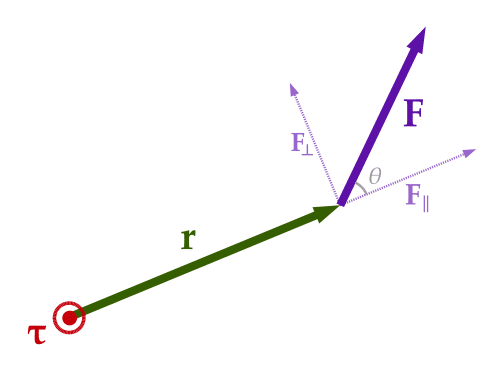When it comes to understanding the mechanics of motion, torque plays a pivotal role. Whether you’re a physics enthusiast or a car enthusiast, knowing the torque formula is essential. In this comprehensive article, we will delve into the concept of torque, explore the torque formula, and discuss its real-world applications.

✅ AI Essay Writer ✅ AI Detector ✅ Plagchecker ✅ Paraphraser
✅ Summarizer ✅ Citation Generator
What is Torque?
Torque refers to the twisting force that causes rotational motion. It is the turning effect experienced when a force is applied at a certain distance from a pivot point or axis of rotation. Think of it as the force responsible for turning a wrench to loosen a bolt or making your car’s wheels spin.
To understand torque better, let’s break down its key components, as highlighted in the text:
- Linear Force (F): This is the force applied to an object.
- Distance from Axis (r): The distance measured from the axis of rotation to where the linear force is applied.
- Angle (θ): The angle between the direction of the linear force and the line connecting it to the axis of rotation.
The torque formula, T = F × r × sinθ, encapsulates the relationship between these components. Let’s break down each part:
- T: Represents torque.
- F: Denotes the linear force applied.
- r: Stands for the distance from the axis of rotation.
- θ: Represents the angle between the force vector and the lever arm vector.

As stated earlier, sin(θ) has no units, r is measured in meters (m), and F is measured in Newtons (N). This leads to torque having the unit Newton-meter (Nm).
The Formula Derivation
The formula’s derivation involves concepts like angular momentum and angular acceleration. Here’s a simplified breakdown:
- Rate of Change of Angular Momentum (ΔL/ΔT): This relates to how angular momentum changes over time.
- Angular Acceleration (α): Angular acceleration is the rate of change of angular velocity with time.
The text explains that torque (T) refers to the moment of force and is calculated using the equation T = r × F × sinθ. It highlights that θ represents the angle between the force vector and the lever arm vector.
Real-World Application of the Torque Formula
Now that we have a solid understanding of the torque formula, let’s explore some real-world applications.
When it comes to cars, torque is a crucial factor in determining how powerful a vehicle is. Car enthusiasts often discuss torque figures alongside horsepower. Understanding the torque formula can help you appreciate the engine’s capability to produce rotational force, which translates into acceleration and towing capacity.
In the realm of mechanical engineering, torque is vital for designing various machines and mechanisms. Engineers use the torque formula to calculate the required force to move different components efficiently. Whether it’s designing gears, levers, or pulleys, torque calculations are indispensable.
In construction, torque is essential for tasks such as tightening bolts and nuts using wrenches and power tools. Knowing the torque formula ensures that construction workers apply the correct amount of force to achieve the desired results safely.
Conclusion
Understanding the torque formula is not only essential for physics enthusiasts but also for anyone interested in mechanics, engineering, or even car enthusiasts. It underpins our understanding of how rotational forces work and finds applications in various industries, from automotive engineering to construction. So, the next time you hear the term “torque,” you’ll know exactly what it means and appreciate its significance in our everyday lives.
FAQ
Follow us on Reddit for more insights and updates.





Comments (0)
Welcome to A*Help comments!
We’re all about debate and discussion at A*Help.
We value the diverse opinions of users, so you may find points of view that you don’t agree with. And that’s cool. However, there are certain things we’re not OK with: attempts to manipulate our data in any way, for example, or the posting of discriminative, offensive, hateful, or disparaging material.